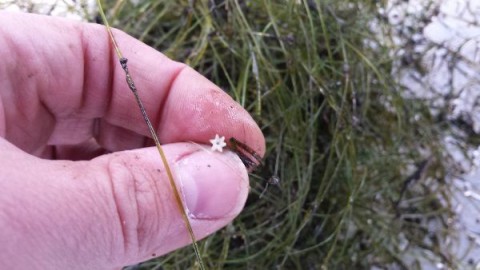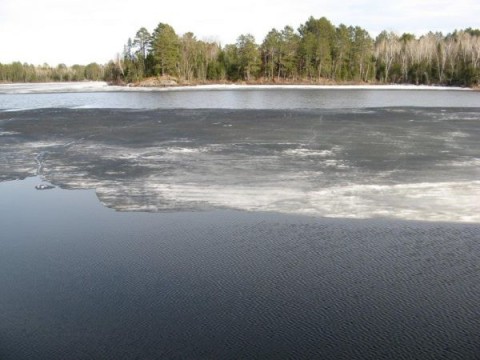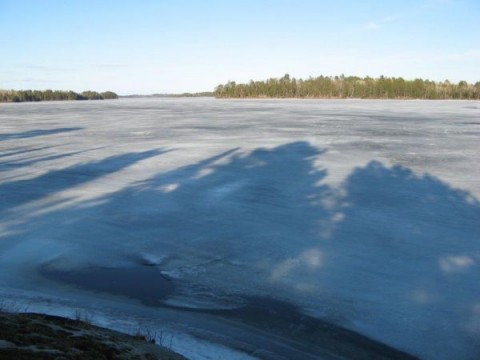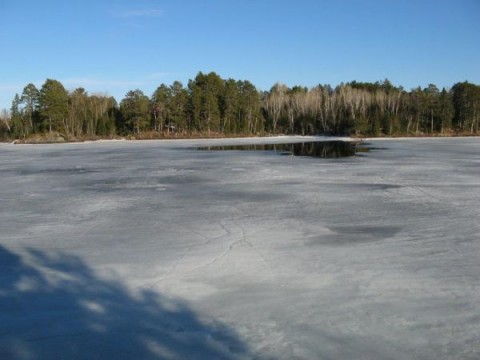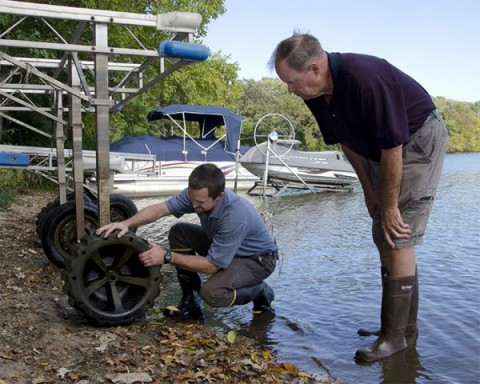Quetico Superior Foundation 2/20/17
A form of algae known to quickly take over lakes has been making its way across the Great Lakes region at a startling speed. Starry Stonewort was found in Minnesota for the first time in 2015, and then again last September, in Lake Winnibigoshish, only about 80 miles from the Superior National Forest. It was also found to have spread to other lakes in central Minnesota.
The plant is hard to eradicate, because herbicides usually only kill the parts of the plant they touch, the Associated Press reported. It is easily transported by boats and trailers.
Scientists have lamented the lack of research into the plant, and worry it could hurt wild rice, a food source for many people and important cultural resource of the Ojibwa. Scientists also say it might not do well in northern Minnesota lakes.
“Our climate suggests that Minnesota has some areas of moderate suitability, but not the best climate,’’ Dan Larkin of the University of Minnesota Aquatic Invasive Species Research Center (MAISRC), told the West Central Tribune.
The MAISRC is conducting several research projects into the plant, including:
· Where else in the United States is vulnerable to starry stonewort invasion
· How it grow and spreads, including how long it can stay alive out of water
· What herbicides work best to control starry stonewort, and what impacts the chemicals could have on other species
According to the U.S. Geological Society, it poses a particular threat because it can be moved from lake to lake by birds and animals as well as people. The plant’s special reproductive cells called oocytes that attach to fur and feathers.
Starry stonewort is aggressive, and easily out-competes other plants. It forms dense underwater mats, blocking growth of native species. This hurts fish habitat, as it crowds out the plants bass and sunfish spawn in, and the fish don’t reproduce in the invasive’s thick growth. It has also been linked to increased water clarity in lakes, which disrupts the ecosystem in significant ways.
The plant is native to Europe and Asia, and thought to have been brought to North America in the ballast water of ships. Its little white star-shaped bulbs usually show up in August and into the fall.
“It almost looks like fishing line when you pull up your weeds and it’s got the little stars on him that’s the easiest thing to look for with this guy,” the DNR’s Mike Bolinski told MPR News. “It looks like a monofilament and then they’ve got little white knots on them that look just like stars.”
It was first found in the state in Lake Koronis, in central Minnesota, where the lake association and the Department of Natural Resources are in the middle of an $800,000 management and research project. It has so far included intense harvesting to control the spread. The DNR reports it was probably brought to the lake on boat trailers from elsewhere. The plant can grow from just small pieces and parts on watercraft and equipment.
Boaters can help limit the spread of starry stonewort and other non-native aquatic plants by following the Clean, Drain, Dispose protocol, which is required by law in Minnesota. Lake users should also contact the DNR if they believe they find starry stonewort.
